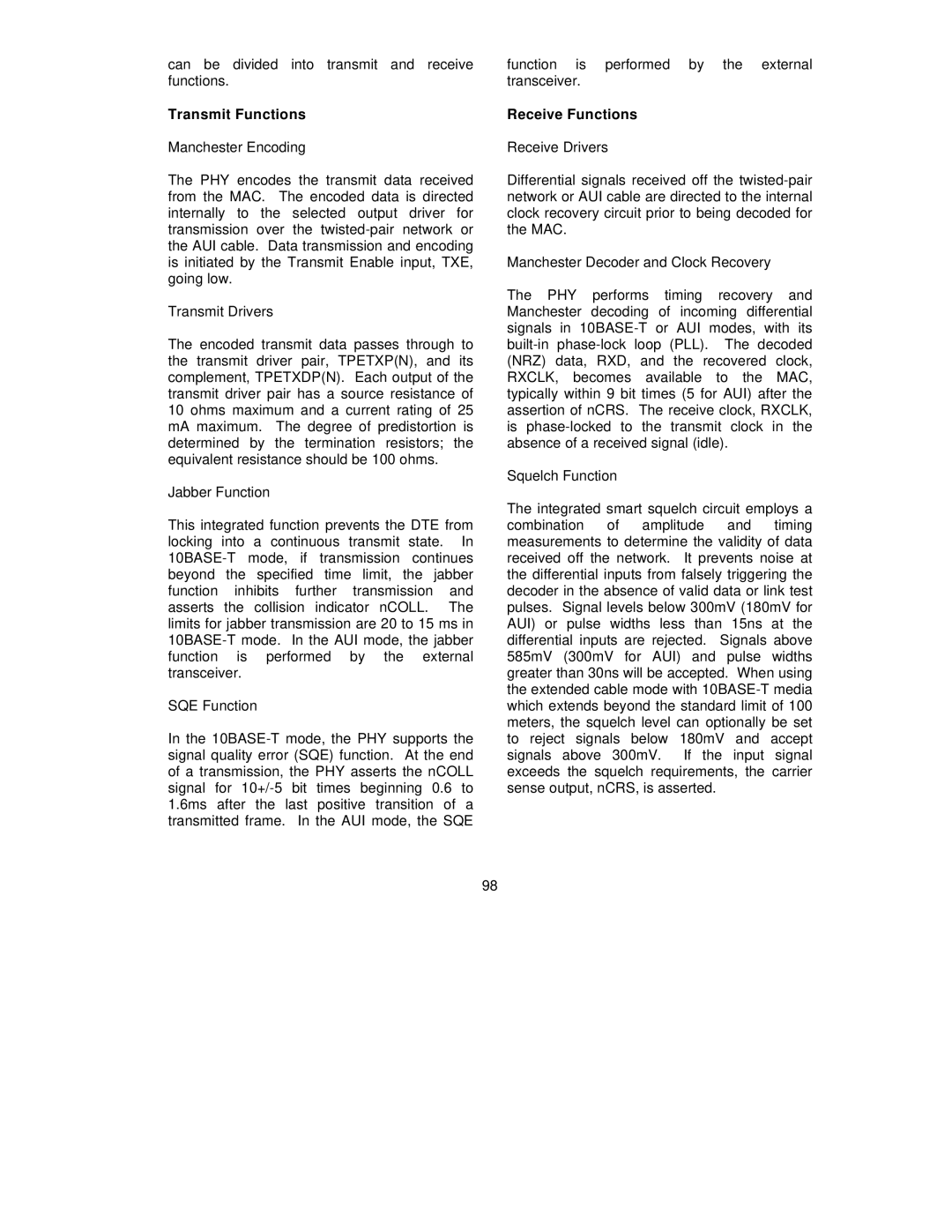can be divided into transmit and receive | function is performed by the external |
functions. | transceiver. |
Transmit Functions | Receive Functions |
Manchester Encoding
The PHY encodes the transmit data received from the MAC. The encoded data is directed internally to the selected output driver for transmission over the
Transmit Drivers
The encoded transmit data passes through to the transmit driver pair, TPETXP(N), and its complement, TPETXDP(N). Each output of the transmit driver pair has a source resistance of 10 ohms maximum and a current rating of 25 mA maximum. The degree of predistortion is determined by the termination resistors; the equivalent resistance should be 100 ohms.
Jabber Function
This integrated function prevents the DTE from locking into a continuous transmit state. In
SQE Function
In the
98
Receive Drivers
Differential signals received off the
Manchester Decoder and Clock Recovery
The PHY performs timing recovery and Manchester decoding of incoming differential signals in
Squelch Function
The integrated smart squelch circuit employs a combination of amplitude and timing measurements to determine the validity of data received off the network. It prevents noise at the differential inputs from falsely triggering the decoder in the absence of valid data or link test pulses. Signal levels below 300mV (180mV for AUI) or pulse widths less than 15ns at the differential inputs are rejected. Signals above 585mV (300mV for AUI) and pulse widths greater than 30ns will be accepted. When using the extended cable mode with
